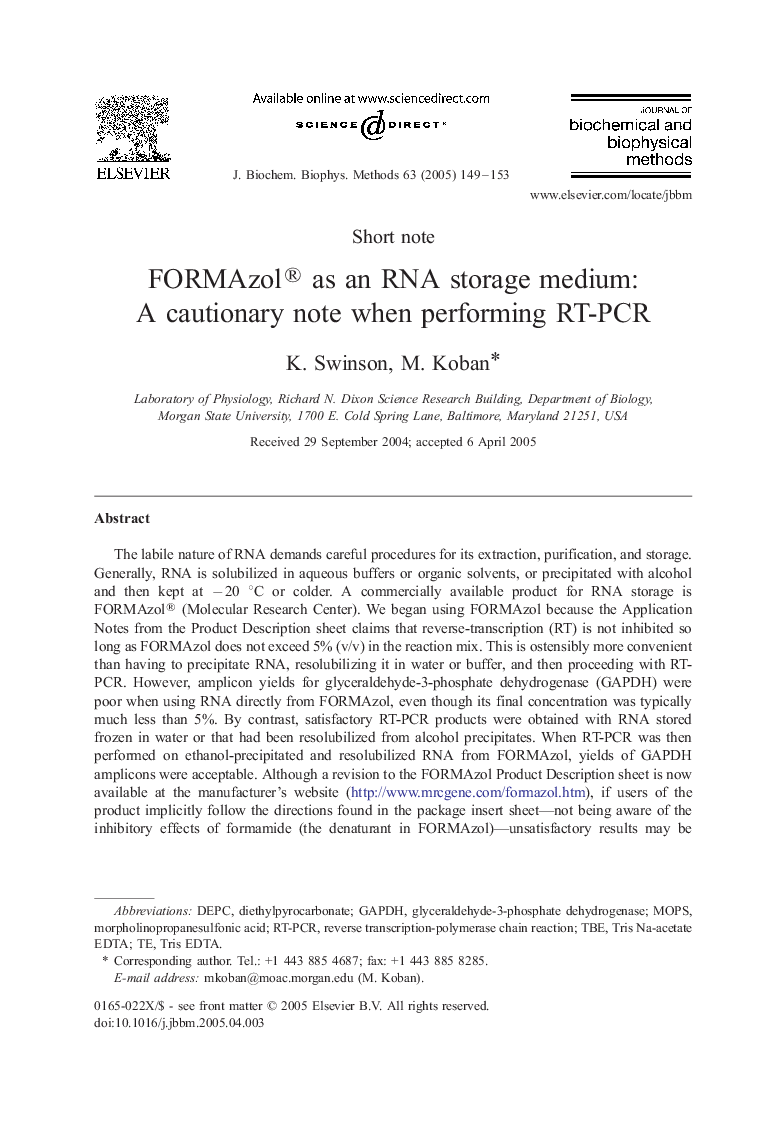| Article ID | Journal | Published Year | Pages | File Type |
|---|---|---|---|---|
| 10824944 | Journal of Biochemical and Biophysical Methods | 2005 | 5 Pages |
Abstract
The labile nature of RNA demands careful procedures for its extraction, purification, and storage. Generally, RNA is solubilized in aqueous buffers or organic solvents, or precipitated with alcohol and then kept at â 20 °C or colder. A commercially available product for RNA storage is FORMAzol® (Molecular Research Center). We began using FORMAzol because the Application Notes from the Product Description sheet claims that reverse-transcription (RT) is not inhibited so long as FORMAzol does not exceed 5% (v/v) in the reaction mix. This is ostensibly more convenient than having to precipitate RNA, resolubilizing it in water or buffer, and then proceeding with RT-PCR. However, amplicon yields for glyceraldehyde-3-phosphate dehydrogenase (GAPDH) were poor when using RNA directly from FORMAzol, even though its final concentration was typically much less than 5%. By contrast, satisfactory RT-PCR products were obtained with RNA stored frozen in water or that had been resolubilized from alcohol precipitates. When RT-PCR was then performed on ethanol-precipitated and resolubilized RNA from FORMAzol, yields of GAPDH amplicons were acceptable. Although a revision to the FORMAzol Product Description sheet is now available at the manufacturer's website (http://www.mrcgene.com/formazol.htm), if users of the product implicitly follow the directions found in the package insert sheet-not being aware of the inhibitory effects of formamide (the denaturant in FORMAzol)-unsatisfactory results may be obtained from RT-PCR experiments. It is suggested that FORMAzol only be used for RNA storage and that RNA be precipitated with alcohol, washed, and resolubilized prior to use.
Keywords
Related Topics
Life Sciences
Biochemistry, Genetics and Molecular Biology
Biochemistry
Authors
K. Swinson, M. Koban,
